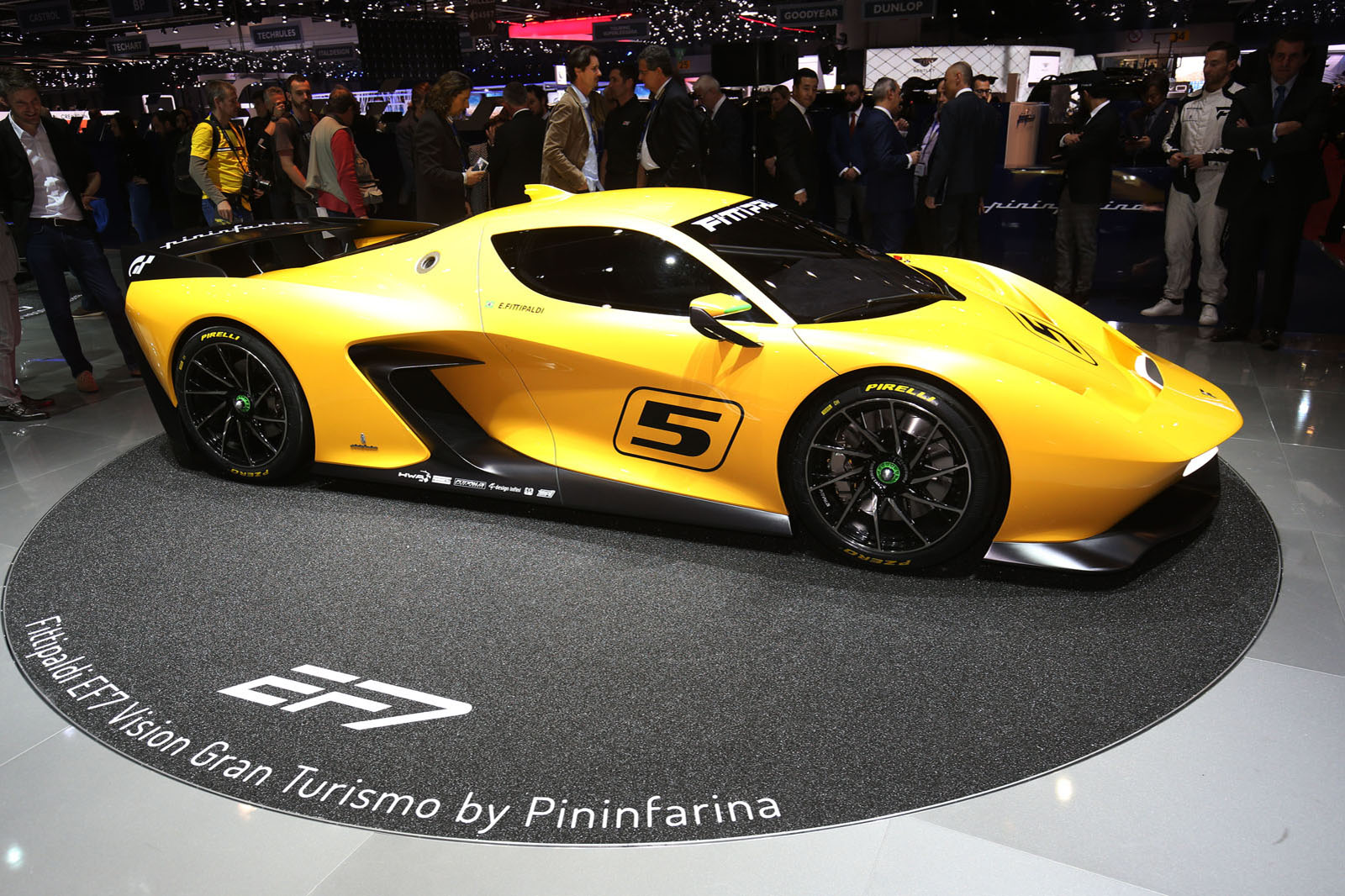HWA, however, is not so well known. Named after Hans Werner Aufrecht, one of the co-founders of AMG, it runs the Mercedes-AMG team in DTM, develops and builds its engines and is engineering the EF7 to production.
HWA has put its head of race car development, Hubert Hügle, in charge of the EF7, and his team is working flat-out to make a running prototype by August of this year. Hügle has been working on the EF7 since November 2015 and showed designs for the carbonfibre tub, the V8 and the Hewland gearbox at a presentation before Geneva, which suggests work is well advanced. But he’s working to a tight deadline, and a production target of next spring suggests a 27-month programme, a strict but not impossible schedule.
Hügle’s main target is a 1000kg kerb weight, which he describes as “tough, but doable”. Fittipaldi is focused on the driver enjoyment of the EF7, basing his ideas around track driving experience of several of today’s GT race cars, including Ferrari, Porsche and Lamborghini.
“I want the lightest car possible because I know that on the track every kilogram is a problem,” he says. “I learned this from Colin Chapman.”
To keep weight down, the front and rear wishbone suspension will be directly mounted to the tub and gearbox, not via heavy subframes. “I am used to driving single-seater racing cars,” he adds. “Every time I drive a GT car, I always feel the momentum and the weight.”
A big part of the EF7 is ease of use. “We want a very forgiving car with some movement, so it will give the driver some information,” says the Brazilian. “It is not 100% a racing car, but a car with which to have fun on the track.”

Although the EF7 is being designed to generate between 400kg and 500kg of downforce at 155mph, Fittipaldi stresses that cornering behaviour won’t be dictated by aerodynamics.
Fittipaldi, who survived a huge shunt late in his career in Indycar racing, stresses how safe he wants the EF7 to be, particularly in a side impact. The central tub is slightly over-sized to ensure it can safely accommodate a driver up to 6ft 2in tall and keep the occupant clear of the interior structure in a roll-over. Each driver will be fitted for a bespoke seat, with the aim of keeping the seatposition constant, regardless of occupant height.
Fittipaldi’s eyes light up as he talks about the 4.8-litre dry-sumped, flat-plane-cranked V8, which will develop peak power at 9000rpm. The illustration shown by Hügle reveals eight Cosworth DFV-style trumpets, and a mention of the engine that powered Fittipaldi to his 1972 and 1974 championships triumphs raises a big smile.
The alloy-blocked 90deg unit will be as light and mounted as low as practical. Hügle says the bespoke gearbox casing features an idler gear to raise the drive and ensure enough ground clearance for the rear suspension and 20in alloys.
The wheels are a story in themselves and mark the return of the aftermarket Fittipaldi Wheels brand, which faded away after becoming every US tuner’s favourite in the 1980s. But it’s not just wheels making a comeback: more than two decades after he retired, Emerson Fittipaldi is ready to make his supercar debut.
